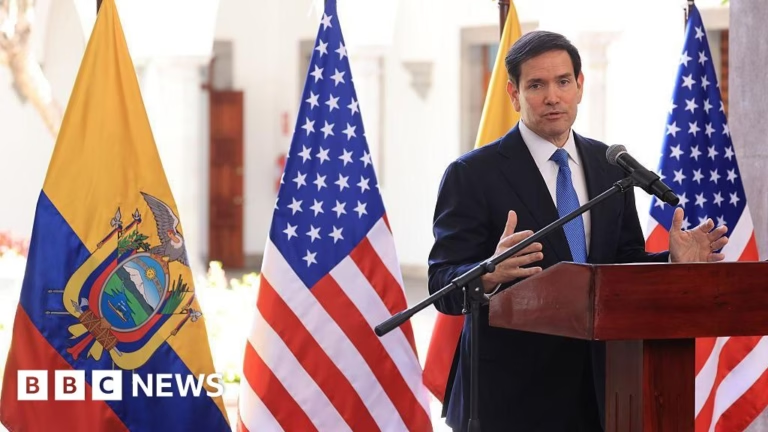The leaders of Canada’s four main federal parties engaged in a heated debate on their responses to US President Donald Trump and disputed matters regarding energy and housing during their first televised debate of the country’s election campaign. This debate marked a crucial moment in the election, allowing leaders to appeal to voters in the significant province of Quebec.
The debate was a significant test for Liberal leader Mark Carney, who maintains a slight lead in the polls but struggles with French, his weakest language among federal leaders. He faced challenges in articulating his points during the debate. A second debate in English will take place on Thursday, just before Canadians vote on 28 April.
During the debate, four candidates participated: Liberal leader and current Prime Minister Carney, Conservative leader Pierre Poilievre, Bloc Québécois leader Yves-François Blanchet, and leader of the New Democratic Party (NDP), Jagmeet Singh. The debate was moderated by Radio-Canada journalist Patrice Roy, who suggested that the short 36-day federal election had been influenced by Trump and asked each leader to outline two campaign promises unrelated to the US or its tariffs.
However, shortly after, Mr. Roy transitioned to a question about how each party would handle the trade war with the US, labeling it the “elephant in the room.” Trump has implemented tariffs on goods from Canada, with exceptions for products covered by the USMCA— a North American free trade deal. Canada is also affected by global US tariffs on steel and aluminum and cars.
Poilievre, from the opposition Conservatives, accused the governing Liberals of weakening the country over the past decade, making Canada more susceptible to economic threats. Carney emphasized his experience as a former central banker for both Canada and the UK, as well as his time in the private sector, stating that Trump respects those who understand the world and how the private sector operates.
On the other hand, Singh from the left-leaning NDP aimed to portray both Poilievere and Carney as unsuitable options for Canadians whose jobs may be affected by US tariffs, stating that they would both cut taxes for wealthy individuals.
The French-language debate served as the first significant test for Carney during the campaign trail, with a second debate set for Thursday evening, where the candidates will speak in English. Despite the first debate’s significance in Quebec, where most French-speaking Canadians reside and Carney’s French is weakest, his performance faced scrutiny.
However, Trump wasn’t the only topic of discussion. The leaders also addressed Canada’s housing crisis and the balance between climate and the economy. Topics such as energy and immigration also made it to the debate stage, with the leaders agreeing on the need for increased oil and gas production and better integration of newcomers and asylum seekers in Canada.
Absent from the debate was the Green Party, which was disqualified for not meeting the debate commission’s criteria.
The debate field also underwent a change, as the start time was adjusted to accommodate an NHL game between the Montreal Canadiens and the Carolina Hurricanes, with a spot in the Stanley Cup play-offs at stake.
Source: https://www.bbc.com/news/articles/ckgx6kl274zo








